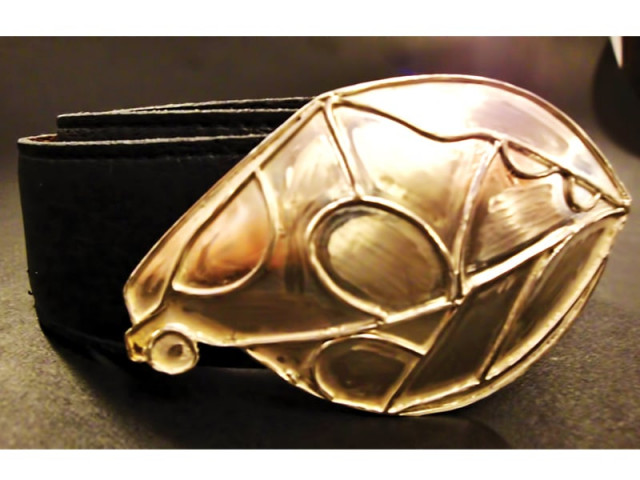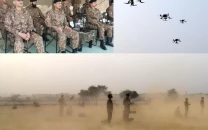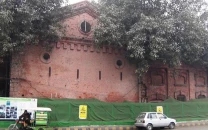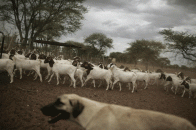School of Visual Arts and Design: Glowing waistcoats take centre stage
Thirty nine graduating students show their work at the Beaconhouse National University Annual Degree Show.

With works ranging from creative textiles to car accessories, the Beaconhouse National University Tarogil Campus hosted the Annual Degree Show 2012 showcasing the work of 39 graduating students of the School of Visual Arts and Design (SVAD) on Thursday.
The degree show, which opened to public at 4 pm on Thursday, showed the work of students from the departments of jewelery and accessory design, textile design, visual communications design and visual arts.
Speaking with The Express Tribune, Beaconhouse School System Board of Governors Chairperson Nasreen Kasuri said the degree show helped students explore their creativity. “The best part of the thesis display is that students have the freedom to express themselves and explore their inner-self.” Kasuri added that the objective of the degree shows was to liberate the students from social conformity demanded in practical lives.
“We hope to change the general perception of jewellery in Pakistan,” said the head of the Jewellery and Accessory Design Department Sahar Bashir. Bashir said students were trained to design jewellery as a craft in which its identity as a cultural piece was kept intact. Claiming to be the first to offer a course in jewellery and accessory design in Pakistan, Bashir said SVAD was graduating its fifth batch in this discipline this year.
Ibrahim Malik’s thesis project showcased accessories which took inspiration from the Volkswagen Beetle. Malik’s family is in the business of jewellery design. He said he had a natural inclination towards accessory and jewellery design. Using leather, wood and silver as materials for the car accessories, which also included personal accessories such as belt buckles and cufflinks, Malik said the Beetle inspired him.
Rabia Rizwan’s work on seven “common” characters in fairy tales was a seven piece project using materials such as sterling silver and zircon. Rizwan designed rings and pendants each reflecting characters in fairy tales such as the “princess”, the “wise man”, the “villain”, the “hero” and the “funny friend.” She hoped that the market for creative accessories would expand in Pakistan. “It is up to us to explore this market.”
Mehreen Zahid showed a collection of more than 70 handbags and scarves. Taking inspiration from rainbow, Zahid used a vast colour palette to produce handbags using hand woven fabrics with printed insides. She said it took her 4 months to produce her products, most of which had already been sold out. Ranging from Rs3,000 to Rs7,000, Zahid hoped to launch her label, Mehreen, soon.
Rushda Nasir’s project, Trans-wonders, included products which could transform. Using synthetic fibres and chemical dyes, Nasir said she experimented with different weaves for almost 5 months. She hoped her design could be practically executed as a product. “Experts are needed to design the final product, for now I am offering my design idea.”
Assistant professor Gwendolyn Kulick of the Visual Communication Design Department said the students were asked to research their projects in an “anthropological manner”.
“Sometimes students took weeks just to figure out what they planned to work on,” she said. Kulick said students were told to work on their projects by first identifying their target audience. She pointed out Syed Faraz Ali’s project, Re-establishing a Cultural Icon, as the “out of the box” project. Ali used psychedelic patterns and fluorescent materials for a range of waist coats. He said they were a cultural icon of Pakistan. The waistcoats glowed in the dark and were designed for the “socialising youth.”
Also on display was Hanifa Alizada’s World Bank award winning photograph, The Distance Between Us. The black and white photograph explored her experience when she migrated to Iran at the age of 8 from Afghanistan. Alizada said her Afghan identity had caused her to perceive her existence as chaotic.
Senior Fellow Prof Nazish Ataullah said she was impressed by the creative mix that the degree show offered. Prof Ataullah said the students pushed their creative boundaries and the thesis projects were an attempt to experiment and explore how far they could go. She said the richness of creativity also added much to the experience of an institution. “It’s a matter of pride for the institution when its graduates showcase such talent - and this is how the National College of Arts (NCA) made its repute,” said the former NCA principal.
The degree show will continue till June 4 and will exhibit projects everyday from noon to 7 pm at the BNU (Tarogil Campus).
Published in The Express Tribune, June 1st, 2012.



















COMMENTS
Comments are moderated and generally will be posted if they are on-topic and not abusive.
For more information, please see our Comments FAQ